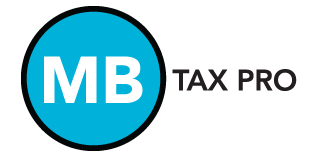Here are a couple great couple quick explanations to what the "Fiscal Cliff" or as some call "Taxmageddon" are referring to.
Introduction
On December 31, 2012, a large swath of the federal income tax code is scheduled to expire, an event which has come to be known as the “fiscal cliff.” Among the expiring provisions are the 2001 and 2003 tax cuts enacted under President Bush, a compromise on the estate tax, a “patch” in the Alternative Minimum Tax (AMT) reducing its impact, the temporary 2 percent payroll tax holiday, increased business expensing, and the “extenders” package of miscellaneous tax deductions. On January 1, 2013, five taxes enacted as part of the Patient Protection and Affordable Care Act (PPACA)—popularly referred to as Obamacare—also take effect, along with sequester spending reductions of $109 billion due to the failure of the “supercommittee” to reach consensus on budget reductions. Taken together this “fiscal cliff,” or “Taxmageddon,” could potentially reduce economic output by hundreds of billions of dollars.
Congress and the President will have little time to rest after the New Year: in late February, the U.S. government will hit the debt ceiling, exhausting its ability to borrow to finance ongoing spending without an increase by Congress. Finally, the federal government’s continuing resolution appropriating spending expires on March 27, 2013.
The fiscal cliff is the culmination of a decade of “temporary” tax
and budget bills that have postponed resolution of key policy differences. Should the tax code be used to heavily promote income distribution or aim instead to raise revenue in the least distortive manner possible? How large should federal spending be? Should PPACA be modified or repealed? Should there be a federal estate tax and if so, at what level? Should the payroll tax be reduced and if so, how should we fund Social Security and Medicare? What should Social Security, Medicare, and Medicaid look like as the population ages?
http://taxfoundation.org/article/fiscal-cliff-primer
The Fiscal Cliff Explained
“Fiscal cliff” is the popular shorthand term used to describe the conundrum that the U.S. government will face at the end of 2012, when the terms of the Budget Control Act of 2011 are scheduled to go into effect.
Among the laws set to change at midnight on December 31, 2012, are the end of last year’s temporary payroll tax cuts (resulting in a 2% tax increase for workers), the end of certain tax breaks for businesses, shifts in the alternative minimum tax that would take a larger bite, the end of the tax cuts from 2001-2003, and the beginning of taxes related to President Obama’s health care law. At the same time, the spending cuts agreed upon as part of the debt ceiling deal of 2011 will begin to go into effect. According to Barron's, over 1,000 government programs - including the defense budget and Medicare are in line for "deep, automatic cuts."
In dealing with the fiscal cliff, U.S. lawmakers have a choice among three options, none of which are particularly attractive:
- They can let the current policy scheduled for the beginning of 2013 – which features a number of tax increases and spending cuts that are expected to weigh heavily on growth and possibly drive the economy back into a recession – go into effect. The plus side: the deficit, as a percentage of GDP, would be cut in half.
- They can cancel some or all of the scheduled tax increases and spending cuts, which would add to the deficit and increase the odds that the United States could face a crisis similar to that which is occurring in Europe. The flip side of this, of course, is that the United States' debt will continue to grow.
- They could take a middle course, opting for an approach that would address the budget issues to a limited extent, but that would have a more modest impact on growth.

